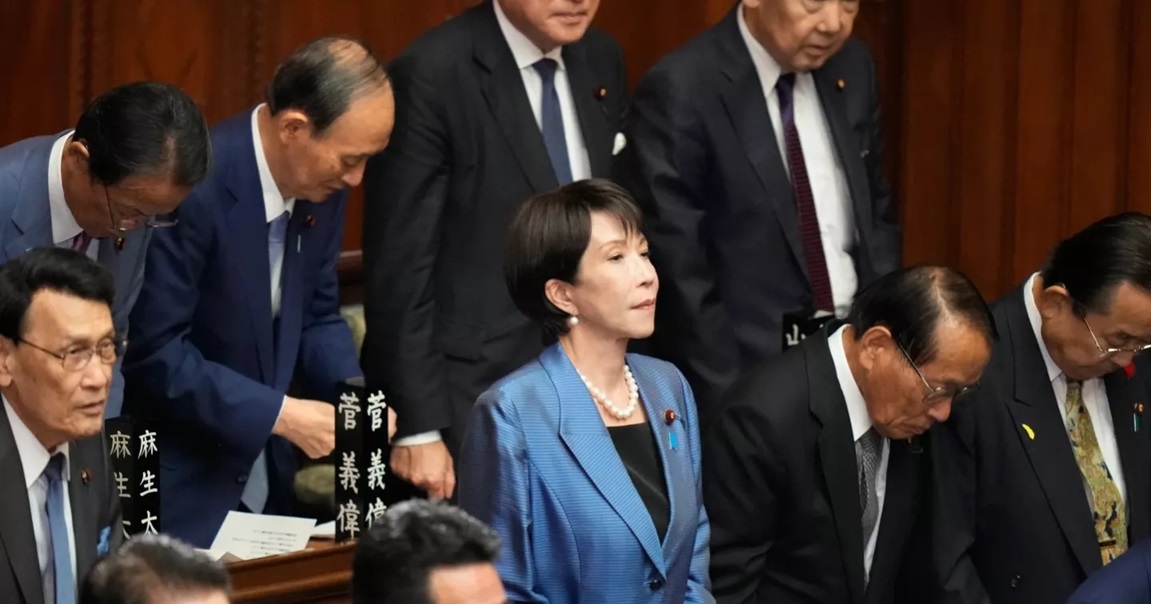Japan’s parliament elects Sanae Takaichi as country’s first female prime minister


Japan’s parliament on Tuesday elected ultraconservative politician Sanae Takaichi as the nation’s first female prime minister, a day after her struggling Liberal Democratic Party (LDP) struck a coalition deal with a new right-leaning partner.
Takaichi succeeds Shigeru Ishiba, ending a three-month political impasse following the LDP’s crushing defeat in the July elections. Ishiba, who served only one year as prime minister, resigned earlier in the day along with his Cabinet to clear the way for his successor.
In the parliamentary vote, Takaichi secured 237 votes—four more than the required majority—defeating Constitutional Democratic Party of Japan (CDPJ) leader Yoshiko Noda, who received 149 votes in the lower house.
Her appointment was assured after the LDP formed an unexpected alliance with the Osaka-based Japan Innovation Party (Ishin no Kai), a right-wing group that helped offset the opposition’s lack of unity. However, the new coalition still falls short of a majority in both chambers of parliament, meaning Takaichi will need support from other opposition groups to pass key legislation—posing a potential challenge to her government’s stability.
“Political stability is essential right now,” Takaichi said during Monday’s signing ceremony with Japan Innovation Party leader and Osaka Governor Hirofumi Yoshimura. “Without stability, we cannot pursue strong economic or diplomatic policies.”
The coalition agreement highlights the shared nationalist and hawkish stances of both parties. It came after the LDP’s breakup with its longtime partner Komeito, a Buddhist-backed centrist party that took a more moderate approach to defense and diplomacy. The split had raised concerns of a possible power shift in Japan’s long-dominant ruling bloc.
Later on Tuesday, Takaichi, 64, is expected to announce her Cabinet lineup, which will include several close allies of powerful LDP figure Taro Aso and other supporters from her leadership bid. Yoshimura said his party would not take ministerial posts immediately, pending further confidence in the partnership.
Takaichi faces pressing challenges: a major policy speech this week, upcoming talks with U.S. President Donald Trump, and regional summits. She must also address rising prices and unveil new economic stimulus measures by late December to ease public discontent.
Despite making history as Japan’s first female prime minister, Takaichi is not expected to prioritize gender equality or diversity. Known for her conservative views, she supports the imperial family’s male-only succession system, opposes same-sex marriage, and rejects allowing married couples to retain separate surnames.
A protégé of slain former Prime Minister Shinzo Abe, Takaichi is expected to continue his policy agenda—strengthening Japan’s military, revitalizing the economy, and pushing for constitutional reform. However, with a fragile political base, analysts say it remains uncertain how much she can accomplish.
Komeito’s departure from the coalition was driven by dissatisfaction over the LDP’s handling of slush fund scandals and concern about Takaichi’s revisionist views on Japan’s wartime history. Her regular visits to the controversial Yasukuni Shrine have also drawn criticism from China and South Korea, which view the shrine as a symbol of Japan’s past militarism.
In a recent gesture of restraint, Takaichi sent a religious offering to Yasukuni instead of visiting in person last week, signaling an effort to tone down her hawkish image as she begins her historic premiership.
